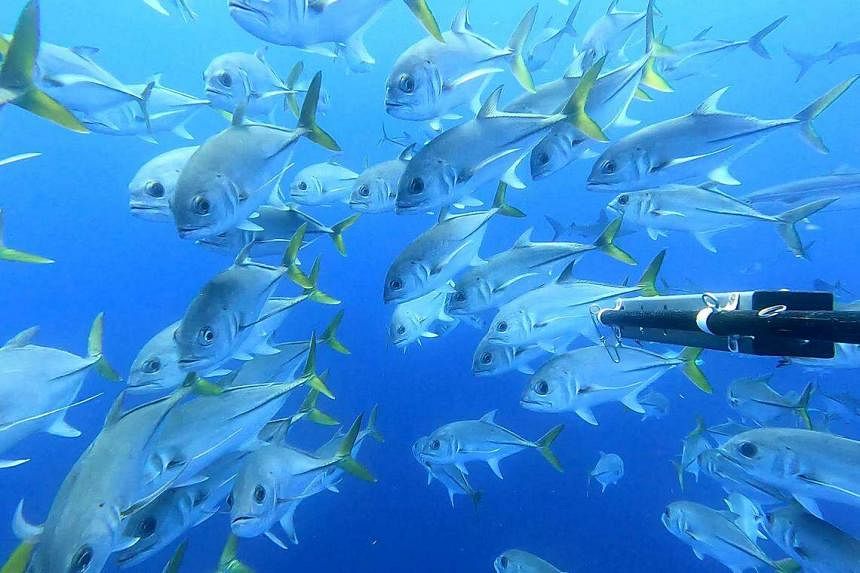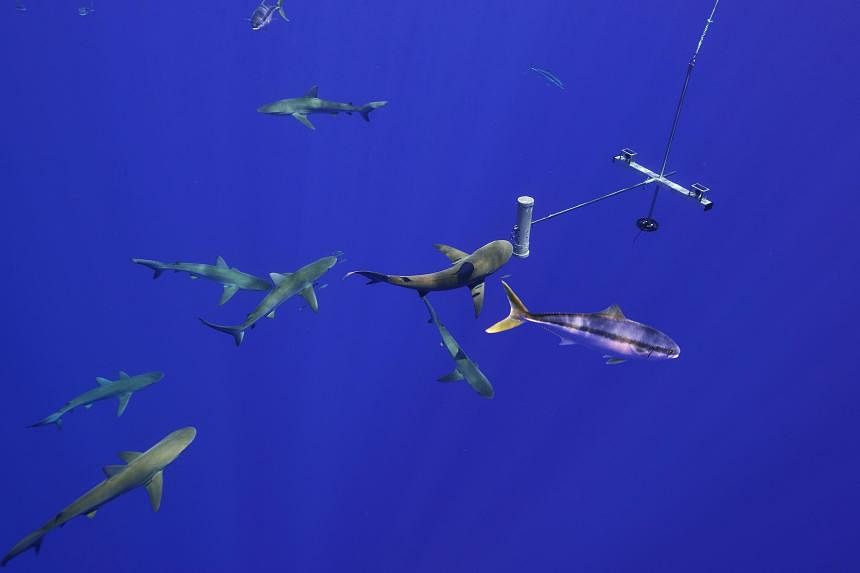SINGAPORE – They may not be as colourful as a coral reef or come to mind as easily as a mangrove, but the remote high seas also play a critical role in safeguarding marine biodiversity – and ensuring humans continue to have seafood on their plates.
A new study has found that establishing no-fishing zones far from densely populated cities – including in international waters – can provide open water fish, such as tuna and sardines, with a safe haven to grow older and larger.
The presence of such older, larger fish can help to replenish fished populations and safeguard stocks in the face of overfishing and climate change, said the authors of the study, published on Feb 29 in journal Science.
“Bigger fish lay more eggs. A single 10kg fish lays more eggs than 10 individual fish weighing 1kg each,” said the lead author of the study, Dr Tom Letessier from the Zoological Society of London.
“This means that it’s the big old females that are most important in terms of reproductive output, and safeguards should be put in place for protecting those individuals in a population,” he told The Straits Times.
Abundance, or the number of individuals, is often used as a proxy of population health, but in the watery world, size also matters. Overfished areas could still number many individuals, if these are younger, smaller individuals that have not yet started reproducing.
If the fishery is not given time to recover, it could result in “fishing down the food web”.
This is a phenomenon in which large, commercially valuable fish are removed faster than they can reproduce, prompting fishing fleets to go after smaller, less valuable individuals, eventually turning a once-thriving area into a depleted wasteland.
How researchers did it
To determine how marine protected areas affect the size of fish, researchers deployed underwater camera systems inside and outside such areas across the Atlantic, Indian and Pacific oceans between 2006 and 2020.
The 80 locations surveyed in the 14-year period included areas close to coastal hubs and cities, such as Perth, Australia, and those that are more remote, such as the Galapagos Islands in the Pacific Ocean and Chagos Archipelago in the Indian Ocean.
The sites span different ecosystem types, including open-water areas (to detect species that thrive in the water column, like tuna) and habitats more closely tied to the seafloor (such as coral reefs).
For pelagic sites, cameras were suspended mid-water – about 10m under a surface float – while seafloor cameras were deployed on the seabed to study benthic, or ocean floor, habitats.
The researchers collected more than 20,000 hours of footage, which the research team, including at least 20 students and lab technicians, had to manually comb through to identify and count the more than 800,000 sea creatures they caught on tape.
Open water species they found included shark species, tuna and sardine, while benthic species included cod, grouper and snapper.
With this data, the researchers mapped out the distribution of species based on their sizes in the various locations and found a common trend. In protected areas, the proportion of larger fish to smaller fish was greater for both open-water and seabed habitats.
The data yielded another insight: For open-water species, the effect was even more pronounced when the marine protected areas were farther away from a coastal hub. In other words, the more remote the protected area, the larger the pelagic fish.

Study co-author Alan Friedlander, chief scientist of National Geographic Society’s Pristine Seas initiative, told ST: “Although tuna and other pelagic species can move great distances, studies have shown that in many cases tuna spend nearly all their lives within relatively small patches of ocean, and their protection likely benefits local fisheries.”
Contrary to the idea that establishing protected areas could deprive subsistence fishing communities of their livelihoods, the data indicates that the protection could improve fishing yields.
Dr Friedlander pointed to the Papahanaumokuakea Marine National Monument in Hawaii as an example, saying the protected area there had shown spillover benefits for tuna, with increased fish catch adjacent to it.
“Recent research shows that closing the high seas to fishing would increase fisheries yield in countries’ exclusive economic zones, and fisheries profit,” he added. “That would also increase the social equitability of fishing, by shifting benefits to local fishers away from large foreign fleets fishing pelagic migratory species.”
The importance of the high seas
Dr Letessier said the findings also point to how the recovery of the world’s largest and most endangered fish in pelagic systems requires the creation of highly protected areas in remote locations, including in the high seas, where protection efforts lag.
“Better sampling in the high seas using standardised methods like baited cameras would give critical information of the best places to prioritise,” he added.
The high seas refer to international waters, located more than 200 nautical miles from any coastline.
Protecting them would require international cooperation, for instance through the High Seas Treaty, a United Nations agreement that is designed to protect life in the marine areas beyond national jurisdictions.
The treaty, also known as the Marine Biodiversity of Areas Beyond National Jurisdiction (BBNJ) Agreement, recognises that such areas are increasingly under threat from pollution, climate change and overfishing.
In March 2023, more than 190 nations agreed on the text of the treaty, which Singapore helped to broker, and it was adopted by the UN in June that year.

When the new treaty comes into force after it is formally adopted, signed and ratified by enough countries, it will allow the creation of marine protected areas in these international waters.
It will enter into force after 60 countries ratify the treaty. To date, only two nations – Palau and Chile – have done so.
Senior officer Nichola Clark of the Ocean Governance project at Pew Charitable Trusts, who was not involved in the research, told ST that studies like this are helpful in understanding the issues that could enable the design, establishment and management of future marine protected areas outside of national jurisdictions.
For example, this study has yielded insight into the types of activities that pose the greatest threat to biodiversity, the species that are particularly vulnerable to those menaces, and the characteristics of marine protected areas that are most likely to have a positive impact on the biodiversity and ecosystems they aim to protect.
Asked how the establishment of marine protected areas in the high seas could impact coastal communities, including those in South-east Asia, she said: “Overfishing key species in the high seas can have devastating consequences for coastal nations, particularly those... where livelihoods depend upon healthy coastal resources.
“The establishment of marine protected areas in the high seas can have benefits that extend well beyond the borders of the area – including for neighbouring coastal ecosystems.”
For example, in instances where a nation has established a marine protected area within its exclusive economic zone, establishing a marine protected area in the high seas could help amplify and enhance the effectiveness of that domestic protection, she added.


